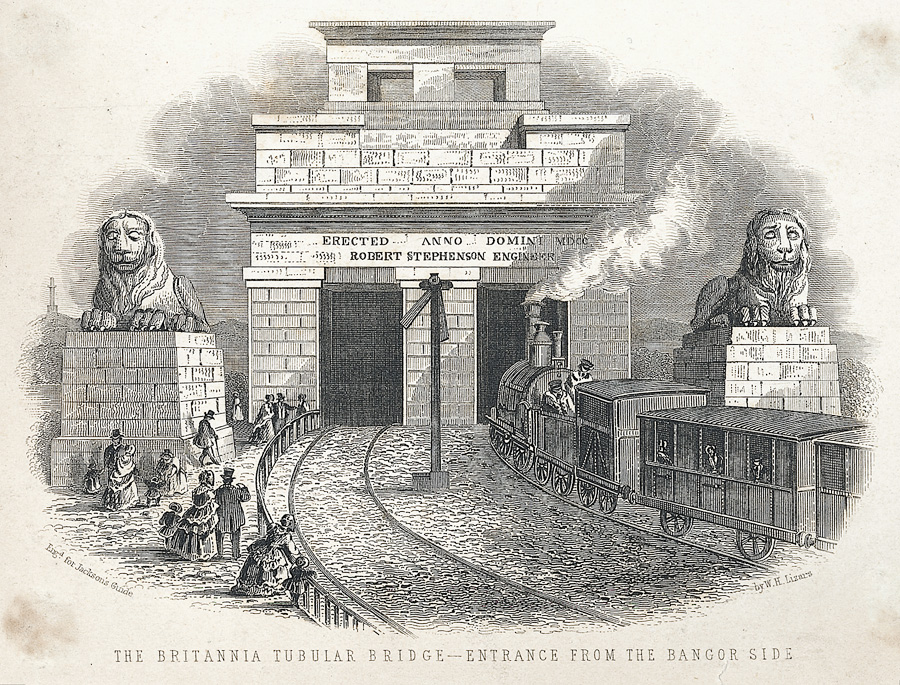DerekC
Established Member
Two small tubes would be stronger than one large one?
It could stand to reason (and that had been my assumption too), but no.Two small tubes would be stronger than one large one?
You are correct that the Admiralty insisted that the bridge be high enough that it would not impede the passage of ships (like the Menai suspension bridge). But I suspect you're describing the fact that there are separate tubes either side of the central tower on Britannia rock, which isn't quite what the question was asking. Your mention of rigidity, however, is tangentially connected to the answer.would this be due to a similar requirement made to Brunel when bridging the Tamar in that the Admiralty stipulated that the bridge must be at a certain height (in the case of the Royal Albert Bridge 100ft) above river level to permit the passage of a fully rigged sailing ship. As well as the height, there was the distance between the piers, hence the need for a rigid structure

Your memory is correct about the method of assembling and erecting the tubes, but Stephenson didn't say that was the reason for having separate tubes for thte up and down lines.From memory the tubes were prefabricated close to the site, floated out on pontoons, located into slots in the piers and then jacked up into position. Might one big tube have been to large and heavy to allow this construction method?
Yes, me too. There's another engraving with wrong-line running, depicting the other end of the bridge. And there's an engraving which appears to be a mirror image of the first, but while it puts the train of the correct track, the curve of the railway is now wrong. But that's not directly relevant to the current question.PS - I wonder why the train is running wrong line!
You're dancing ever closer to the answer, but the concern wasn't about sagging, per se.Did Stephenson say it would sag too much? I would have thought that could be overcome by putting a longitudinal diaphragm into the tube between the two tracks, but perhaps that would have made it harder to fabricate.
No, sorry.some sort of resonance damping?
No, sorry.
The issue is to do with the consequences of putting two running lines in a single tube.
Another good thought, but no.Something to do with air turbulence?
Uneven weight distribution? That would cause problems!Another good thought, but no.
Rather than problems with two trains being in the tunnel at the same time, this problem would manifest itself when one train ran through the single tube.
Yes! The issue was with an off-centre load twisting the tubes.Uneven weight distribution? That would cause problems!
Yes! The issue was with an off-centre load twisting the tubes.
Going from memory (as I don't have my copy of Baughan's History of the Chester & Holyhead Railway to hand) Stephenson was concerned that if two tracks were placed in the same tube, the weight of a passing train would apply a torsion force that would try to twist the tube. By having one tube for each track, he could ensure that the track was aligned centrally, and avoid any significant lateral forces arising from the train passing through.
(I'll edit the above response with a more direct quote this evening.)
Your floor.
